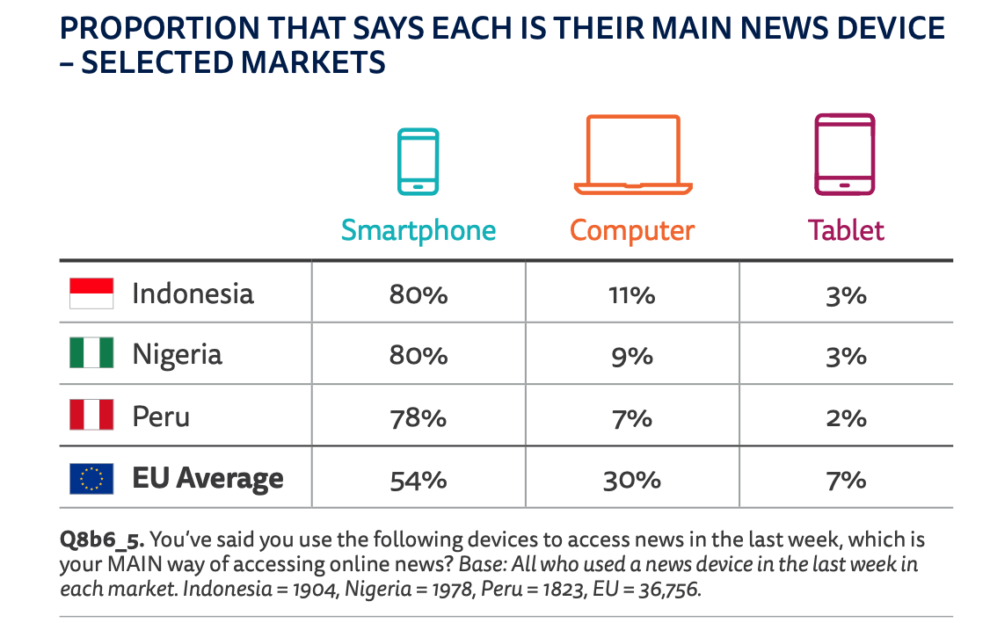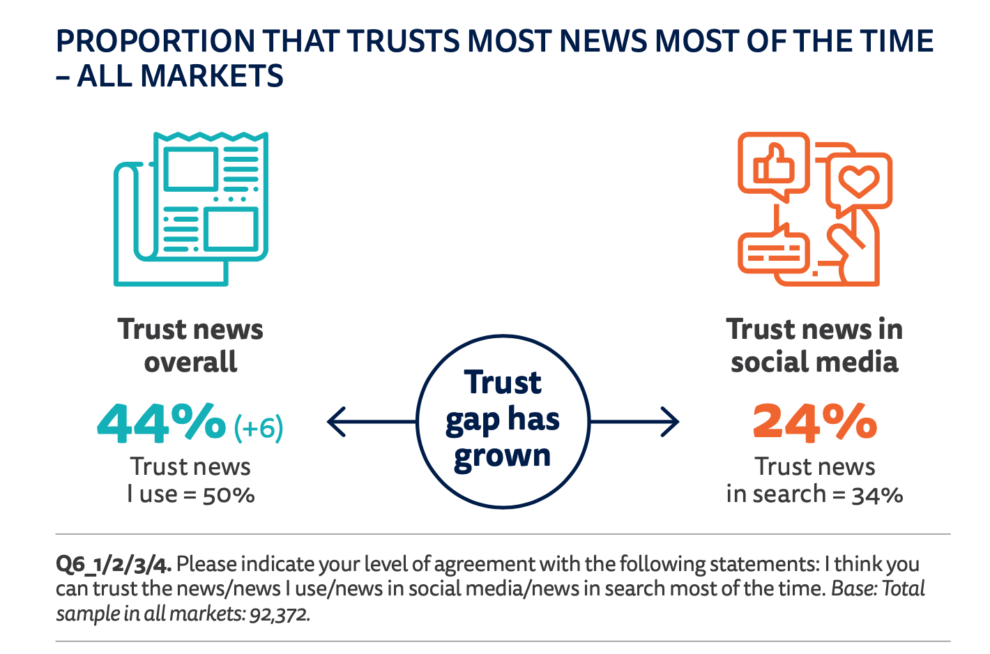Blog
Takeaways from the Reuters Digital News Report 2021
This week, Reuters Institute released their annual Digital News Report 2021. The 164 page report shines a light on the accelerated digital transformation that publishers undertook due to the pandemic and uncovers the key digital trends for the publishing industry over the last 12 months. Join us as we deep dive into the key findings of the report.
Number of people who pay for news continues to grow
Since 2016, the percentage of people who have paid for digital news has risen by 5% to 17%. This is linked in part to relevant news events as well as digital strategies based on tighter paywalls. This success is particularly high in a small number of more wealthy countries. These include 45% in Norway, 30% in Sweden and 17% in both Switzerland and the Netherlands. But publishers in the UK and Germany still have some work to do to overcome the resistance to pay for news. In these countries just 8% and 9% respectively pay for digital news.

Despite there being a general pattern of taking out more than one subscription in areas such as video streaming, the majority of those paying for news subscriptions take out just one subscription. The exception to this is in the USA. This is because in the USA, Reuters found that there is a growing trend to combine a national subscription with that of a local provider or specialist publisher. Outside the USA, those who had 2 subscriptions were found to subscribe to a national title and an international title.
Whilst we are seeing subscriptions taking off for some publishers, they are not working for all. People are either not interested enough in news or lack the disposable income to pay for a subscription. Getting subscribers to prioritise quality news will be a challenge for these publishers. For those that do benefit from a high number of subscribers, subscription and membership is becoming a sustainable financial model. Replicating the value of print and advertising however will be a challenge facing all publishers.
Contacting loved ones has increased mobile dependency
Faced with a lack of commute and time outside the house, 2020 could have been a difficult year for mobile. If anything, it has proved to be the opposite. A colossal 73% of respondents now access the news via a smartphone. Led by countries like Indonesia and Nigeria, smartphone consumption went up 4% from 2020. In contrast, computer news consumption fell from 49% to 46%.
In Europe however, the average remains much closer between smartphone consumption (54%) and Computer Consumption (30%)

When diving further into these trends, Reuters see Coronavirus as playing a part in this uptake of mobile. Not only have governments increased their communication to citizens through mobile, but the need to use mobile to keep in contact with loved ones has seen dependency on mobile grow.
Often overlooked by publishers, mobile news alerts have grown along with the use of smartphones. Their reach has tripled globally since 2014, and in the USA they reach 24% of the population.
Aggregators still struggling to grow
In past research, we have kept a keen eye on the evolution of aggregators like Apple News. The Reuters report has also closely followed the topic.
Whilst in the USA, Apple News has grown to reach 33% of iPhone users, (and more interestingly 20% of under-35s), the reach of Apple News continues to be bleak in the UK. Weekly usage has been declining steadily since 2019 to only 21% of iPhone users.

Asia continues to be the home of success for mobile aggregators. Use of them throughout the pandemic has been steady. In Japan, usage of Line News continues to grow cautiously, up 1% to 23%, whilst Gunosy has seen a slight decline of 1% to 11%.
Major aggregator success has taken place in more up-and-coming markets for Line, with its’ reach in Taiwan at 44%, Thailand 36% and Indonesia at 20%. The success of mobile aggregators in Asia can be partially explained down to the bundling of these subscriptions with local phone operators and the wider use of Android devices.
Influencers have overstepped their mark
Social media has been the fastest growing area for news consumption for many years, and this trend has continued. 26% of Reuters sample answered that social media was the main access point for their news consumption. This figure grew to 34% amongst under-35s.

The big mover for 2020 has been Chinese platform TikTok. 24% of under-35s are on the platform, and 7% say that they use the platform to get their news. Whilst publishers are continually attempting to grow their audiences on the platform, influencers still lead the way in attracting attention around news on the platform. In fact, the situation is the same for users of Snapchat and Instagram. News brands and journalists only receive the most attention on the more traditional social media platforms of Facebook and Twitter. But often the news of these influencer-driven platforms tends to be around less formal topics, such as health and fashion.

Somewhat worryingly, the appeal of these influencers has overstepped its’ mark in traditional news topic. In their research, Reuters found that influencers and celebrities on social media are amongst the top distributors of misinformation around vaccines and 5G. This presents the publishing industry with a big challenge over the course of 2021. As governments across the world increase their vaccine efforts to enable the world to return to some form of normality, publishers have a role to play in correctly informing citizens about vaccine safety. The struggle of publishers v. influencers is one to follow over the coming year!
The public regains trust in the media
With the world faced with an unprecedented medical crisis, the public wanted information that they could trust. Despite trust in the media being at its’ lowest level for some years in 2020, the public restarted their relationship with the media. In fact, 44% of Reuters sample stated that they trust most news most of the time. This represents a healthy 6% bounce back in trust over the last 12 months. What is particularly important to note from Reuter’s findings is that trust gaps are also up. In fact, just 24% of respondents now trust news in social media.

Intriguingly, trust in the media remains lowest in the USA at 29%. A significant proportion of this distrust comes from citizens on the political right who previously supported President Trump. These respondents said that they are now disillusioned with the mainstream media.
On the positive side in countries like Finland trust in news media increased by 9% to a global high of 65%!
Reuters speculate that this overall increase of trust in the news can be seen to be down to extensive coverage of the Coronavirus. As the global population becomes more widely vaccinated and the virus becomes less of a threat, it will be interesting to follow these trust levels.
Other Blog Posts

Stay on top of the game
Subscribe to Twipe’s weekly newsletter to receive industry insights, case studies, and event invitations.
"(Required)" indicates required fields

